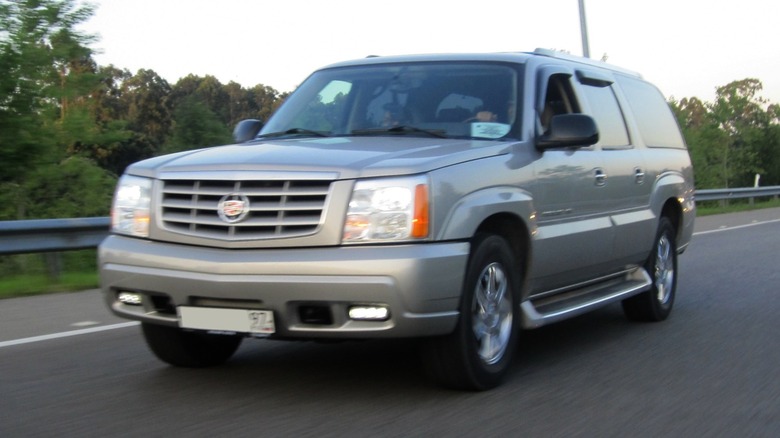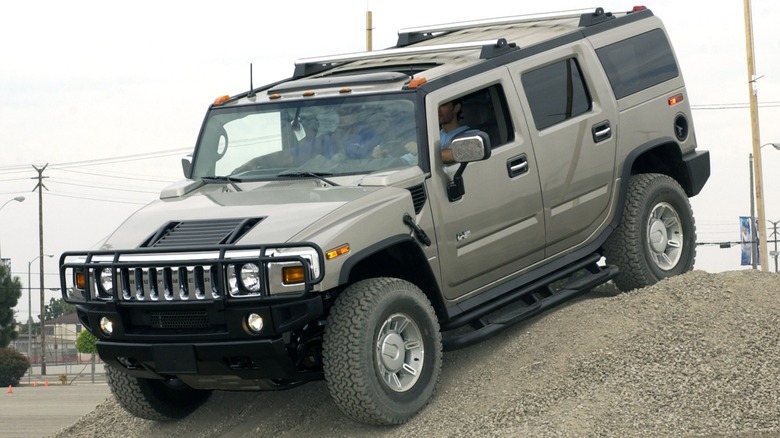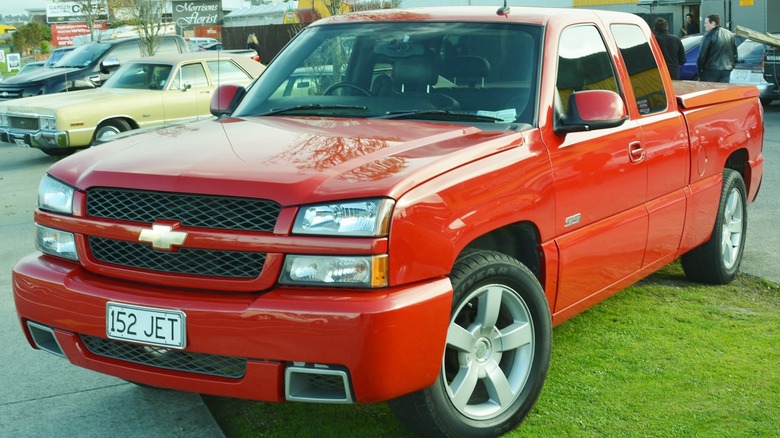LQ4 Vs. LQ9: What's The Difference Between These Engines And Where Were They Made?
General Motors introduced the third-generation small-block V8 engine, the 5.7-liter LS1, in conjunction with the new C5 Chevrolet Corvette in 1997. That launch marked the beginning of the LS engine platform that would power GM cars and trucks for more than a decade while maintaining the architecture of the original small-block Chevy engine it replaced. Starting in 1999, heavy duty pickup trucks and large SUVs from Chevrolet and GMC would get a new LS-based engine, the LQ4.
The 6.0-liter LQ4, commonly known as the Vortec 6000, was a version of the LS1 but used cast iron for its engine block instead of cast aluminum. Purpose-built as a truck engine, LQ4 horsepower ranged between 300 and 330 with torque in the 360 to 370 lb-ft range over its nine years of service, ending in 2007.
Improving upon the LQ4, the LQ9, marketed as the Vortec HO 6000 or Vortec Max, also featured cast iron engine block construction and displaced 6.0-liters. The LQ9 featured higher performance components to make 345 horsepower and 380 lb-ft of torque. GM used the LQ9 in premium large SUVs and pickup trucks from 2002 to 2007, when other GM 6.0L engine versions replaced both LQ engines.
Prior to the financial crisis that hit U.S. automakers and the economy in general in the late 2000s, GM had manufacturing subsidiaries around the world. Two notable Vortec engine manufacturing plants prior to GM's restructuring were located in Silao, Mexico, and Romulus, Michigan.
[Featured image by Spanish Coches via Wikimedia Commons | Cropped and scaled | CC BY 2.0]
What are the differences between the LQ4 and LQ9 6.0L GM Vortec V8 engines?
Both engines use the same cast iron block and aluminum cylinder heads, with the exception of the 1999 and 2000 LQ4, which had cast iron heads. They have the same 4.40-inch cylinder bore spacing with a 4.00-inch diameter bore and 3.622-inch cast iron crankshaft stroke.
The 1999-2000 LQ4 crankshafts feature a 1.25-inch-thick rear flange, where other LQ4 years and all LQ9 crankshafts have a rear flange measuring 0.857-inches thick. Wrist pins, the part that joins the piston to the connecting rod, like the connection between your fist and forearm, started out as pressed in early versions of LQ4 engines but changed to full-float varieties in 2005. LQ9 wrist pins were always the full-float type.
With 345 horsepower, the LQ9 was more powerful than any iteration of the LQ4. The extra power was generated primarily through the use of higher-compression flat top pistons generating a 10.1:1 compression ratio and fuel injectors capable of delivering more fuel. The LQ4's dished pistons added 6.7cc to the combustion chamber, dropping the compression ratio to 9.4:1.
What vehicles use the LQ4 and LQ9 6.0L Vortec?
Upon its 1999 model year debut, the LQ4 engine served as an optional engine for the Chevrolet Suburban, Chevy Silverado 2500, and GMC Sierra 2500 pickup trucks. Starting in 2001, GM expanded its use to the Silverado 1500 HD, 2500 HD, and 3500 pickups and the GMC Sierra 1500 HD, 2500 HD, and 3500 HD and the Yukon Denali XL. By 2003 GM was offering the LQ4 in full-size vans such as the Chevy Express and GMC Savana as well as the Hummer H2, a tamer version of the Gulf War Humvee.
The higher-output LQ9 Vortec 6000 was first available in the Cadillac Escalade, arguably one of the best Cadillacs of all time, in 2002 to kick off the second-generation of the luxury SUV. Later uses included the Chevy Silverado SS pickup truck, not to be confused with the early 1990s Chevrolet 454 SS. The last few years of the LQ9's service saw its use in sporty pickup model trims like the Silverado and Sierra HO and Vortec Max.
[Featured image by GPS 56 via Wikimedia Commons | Cropped and scaled | CC BY 2.0]


